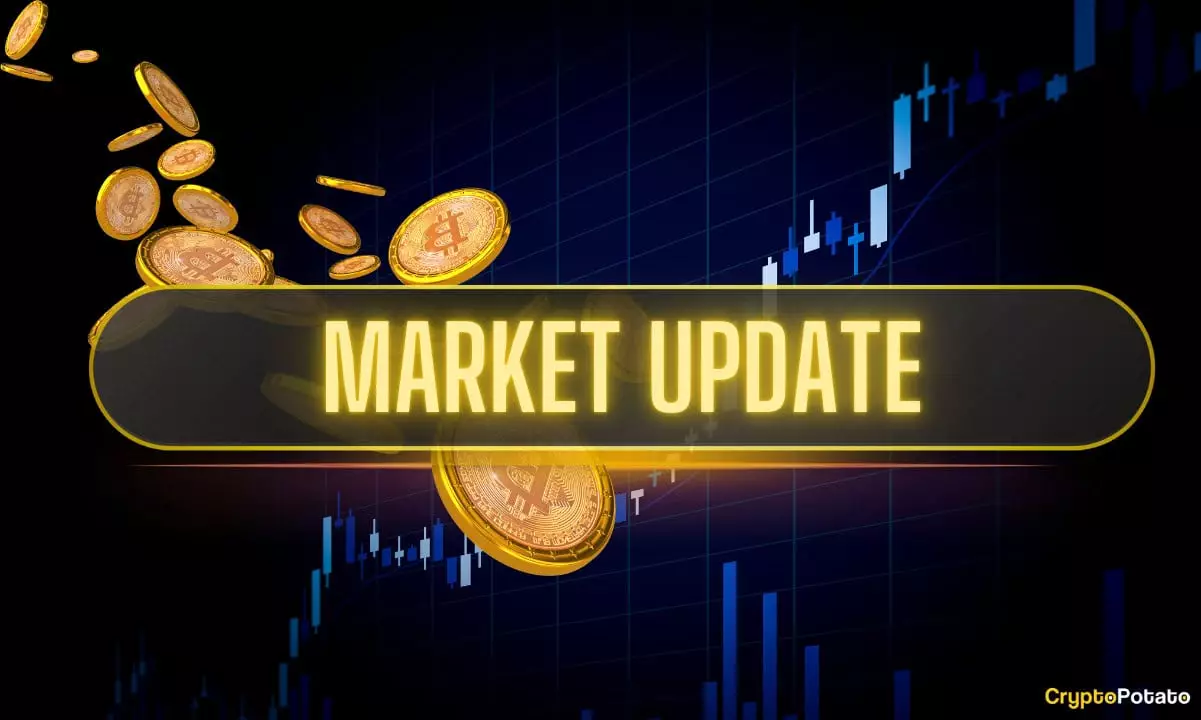The past week has been a roller coaster for both political and financial realms, showcasing the complex interplay between events in Washington and the volatile world of cryptocurrency. While the start of the week was defined by a sense of stagnation, it quickly morphed into a whirlwind of drama involving high-profile figures that transcended mere soap opera antics. This sequence of events managed to send ripples through the crypto markets, highlighting the fragility of investor sentiment and the often unpredictable nature of digital assets.
The narrative began subtly enough, with Bitcoin’s price stabilizing near the $104,000 mark after previously hitting a ceiling at around $110,000. This seems insignificant when compared to the budgetary battlegrounds and political machinations unfolding, but this establishment of stability was merely a precursor to the upheaval that was about to ensue. As the week progressed, Bitcoin reached for $106,500 before running into a forceful wall of selling pressure. Here is where the drama intensified, with the altercation between prominent figures in tech and politics stealing the spotlight and diverting focus from market fundamentals.
The Fallout from Political Drama
At the core of this week’s tumult was a public spat between the President of the United States and Elon Musk, a figure whose influence on cryptocurrency has become undeniable. With both figures utilizing social media as their podiums of choice, the confrontation was anything but subtle. Musk’s audacious claims hinted at deeper conspiracies, suggesting Trump’s involvement with unsavory figures, while the President retorted with threats to revoke significant government contracts tied to Musk’s ventures. This set the stage for markets to become ensnared in what might be described as a circus of intemperate exchanges.
As the situation evolved, crypto markets reacted in a decidedly negative manner—particularly Bitcoin, which plummeted to a multi-week low of approximately $100,400. Critics who point to this kind of volatility often overlook that the intertwining of political drama and market dynamics can create a feedback loop, producing outsized effects. The allegations and retaliations between these power players had genuine implications for market confidence, leading traders to pull back amid uncertainty.
Market Reaction and Underlying Trends
Despite the pandemonium surrounding Musk and the President, Bitcoin managed to recover to around $104,000 as the week progressed. However, even this resurgence represents a modest 1.7% decline over the week, particularly in the shadow of steeper losses seen across the altcoin spectrum—most notably with DOGE, which fell by 12.5%. This divergence in performance highlights the distinct pressures surrounding Bitcoin as the flagship cryptocurrency continues to be subjected to macroeconomic influences as well as internal market dynamics.
Interestingly, during the price turmoil, an unusual trend emerged. Over 22,500 BTC were withdrawn from exchanges in a single day, hinting at a growing sentiment of HODLing rather than immediate sell-offs. This shift reflects an underlying belief among long-term investors that prices will eventually stabilize and appreciate over time, despite the shockwave effects of week’s drama. Such liquidity dynamics serve as a crucial counterbalance to speculative selling pressure, reinvigorating conversations around the future of Bitcoin and its potential as a hedge against a faltering equity market.
Interest Rates and Future Implications
The European Central Bank’s decision to reduce interest rates to a two-year low of 2% set off another chain of reactions. While initial knee-jerk responses linked this move to bullish sentiment for Bitcoin, a longer view reveals a more complex reality where the relationships between interest rates, economic policy, and market psychology converge. Observations from on-chain analysis further muddied sentiment; indicators suggested that the time was ripe to “buy the dip,” yet overall hesitancy remained prevalent. The narratives surrounding economic governance cannot be dismissed as mere distractions, and their interplay with cryptocurrency markets will likely dictate market movements in the foreseeable future.
Corporate Moves and Their Impact
Moreover, corporate actions are infusing fresh energy into the crypto sphere. The announcement of Robinhood’s $200 million acquisition of Bitstamp cements its ambitions in the European digital asset space, emphasizing the ongoing institutional interest in cryptocurrencies. Such developments invite optimism, yet they stand in stark contrast to the volatile and contentious political landscape.
Finally, major players are also making waves as the world’s largest corporate holder of Bitcoin announced an IPO designed to raise considerable funds for more BTC purchases. While prospects for institutional adoption abound, one cannot ignore the underlying political drama and market volatility that seem intent on shaping a landscape characterized by caution and heightened vigilance among investors.
The coming weeks will likely reveal whether such market dynamics can stabilize amid the backdrop of political theatrics or if the crypto market remains a puppeteer to whims and fancies far removed from traditional economic fundamentals.

